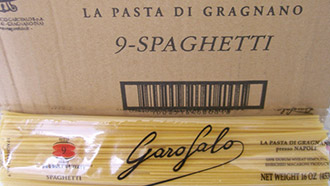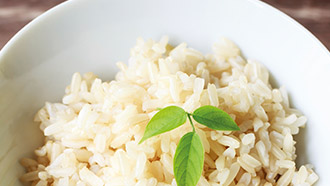Dear stakeholders:
2014 was a year of contrasts among the principal economies in which we operate. Although it closed the year with positive indicators, the year was marked in the eurozone by misgivings as to consolidation of the economic recovery. The GDP growth in the last two quarters of the year and the improvements in the economic activity and consumer confidence indicators at the end of the year finally staved off the risks of a third recession, but for the time being the scenario is not very bright, with recovery rather slower than anticipated, high unemployment levels and substantial differences between countries. Despite this, the lowering of oil prices, depreciation of the euro and reactivation of credit brought about by the expansionary monetary policies and policies to stimulate investment are encouraging indicators for 2015.
In contrast, the situation in the USA is clearly expansionary, with year-on-year GDP growth of 2.4%, rising business and consumer confidence indicators and unemployment levels close to frictional. Even so, according to recent surveys many citizens believe that the country is still in recession (70% according to the Nielsen Global Survey) and average household incomes have not yet recovered pre-crisis levels.
From the point of view of consumer trends, there was an upturn in consumption during the year in many of our principal markets, although at the same time we have witnessed major changes in consumer behaviour. We now face the challenge of adjusting to the rationalisation of our consumers, who have become somewhat less loyal to traditional brands and are only willing to pay for clearly perceived differentiated products.
The changes have also affected distribution, which must adapt to the new tastes. New options have appeared on the scene to compete with traditional distribution channels. The new channels include internet shopping (online supermarket), with very strong growth and where the positions of the leading players often differ from those they have through traditional distribution. This has led to mergers and amalgamations in some significant markets, such as France.
It was an unusual year on the commodity markets. The situation was relatively calm for most crops, with stable prices and maximum stock forecasts. Unfortunately, this was not the case of durum wheat, which suffered the effects of the smaller area sown and lower grain quality due to heavy rain in the summer affecting the principal producers (France and Canada), while prices soared from around 250 €/tonne in June to 430 €/tonne in December. On the contrary, the overall trend on the rice market was one of stable prices and record world production, with stock levels also among the highest on record. The USA had an excellent year with a bumper crop (10% up on 2013/14), apart from Texas which is still hampered by the drought. Within aromatic varieties, the prices of basmati rice have returned to normal and are once again just over 1,000 $/tonne.
Against this backdrop, the development of the rice division was very positive in 2014, with an excellent business progression of Riviana, USA, which recorded its highest yield since it joined the Group in 2004, the record turnover of our Thai subsidiary Herba Bangkok, the successful launching of the latest innovations in Spain, combining the concepts of convenience and health, the satisfactory evolution of business in the UK and Netherlands and the total recovery of earnings in our Moroccan subsidiary, which has further boosted its business by launching two new local brands.
The pasta division, in a situation strongly marked by the extremely high durum wheat prices mentioned earlier, fared unevenly in the different markets in which it operates. In Europe, our company Panzani, with a new, effective communication strategy, chalked up a splendid performance with the best volume growth recorded in the past ten years. In contrast, the profits of our North American businesses were dented not only by the soaring commodity prices but also by the very tough competition on the market, which maintained a high level of promotion throughout the year. Nevertheless, the new ranges of gluten free and ancient grains pasta, with beneficial properties for health, had an excellent performance.
On an international level, we concluded a major inorganic project during the year, the acquisition of 52% of the Italian premium pasta company Garofalo, enabling us to embark on a new course in pasta through that brand on the Spanish market.
On the stock market, the value of the Ebro Foods share fell by 16.8% during 2014. Over the same period, Ibex 35 rose 3.7%, Ibex Med fell by 1.8%, Ibex Small by 11.6% and Eurostoxx Food and Beverage, benchmark for European food sector shares, rose 12.3%. However, our share performance was very positive in the first quarter of 2015, rising 24.4%, compared to 11.3% Ibex 35, 19.8% Ibex Med, 30.2% Ibex Small and 20.3% Eurostoxx Food and Beverage.
In the social and environmental area, we have placed special emphasis on implementing initiatives designed to guarantee sustainability throughout our entire value chain. Bureau Veritas conducted SMETA-4 pillar ethics audits, among others, at the plants of our subsidiaries Mundiriso (Vercelli), S&B Herba Foods (Bootle), Boost Nutrition (plant A & B), Ebro Foods Netherland (Wormer) and TBA Suntra (Schoten).
All in all, the company’s evolution over the year confirms that we have established a sustainable business model capable of continuous reinvention, able to interpret the markets and anticipate the needs of our customers and consumers, using innovation, research and development as one of its main tools for growth and ploughing back part of its gain for the benefit of all our stakeholders and, in short, society at large.
I invite you to consult this report, which contains greater detail on the company’s performance in all its areas of activity during 2014.
-----------
Antonio Hernández Callejas
Ebro Foods Chairman


